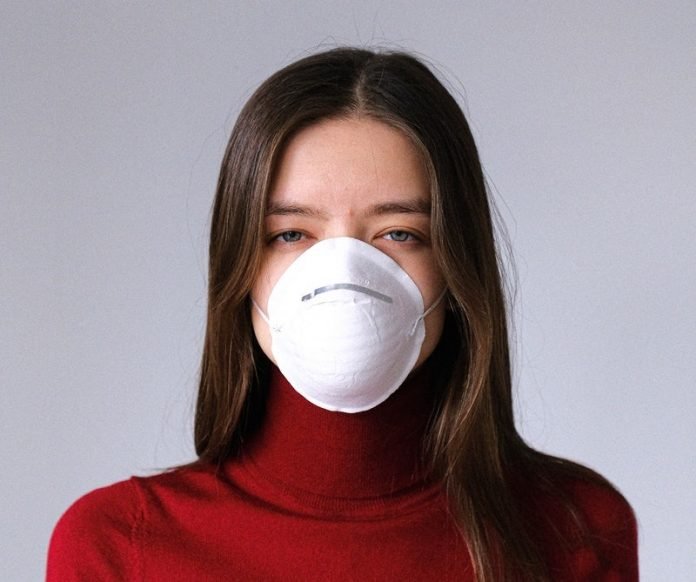
Face masks are an important part of staying safe during the COVID-19 pandemic.
But not all masks are created equal. And if you don’t wear and handle your mask properly, it won’t protect you or others around you.
So which masks work—and which don’t? And how do you safely wear one? Marisa Glucoft, MPH, CIC, Director of Accreditation and Licensing, Infection Prevention and Emergency Management at Children’s Hospital Los Angeles, shares what you need to know.
Why is a mask important?
A face mask helps block respiratory droplets from being sprayed into the air when you talk, breathe, cough or sneeze. That’s important because people can spread the novel coronavirus days before they feel sick.
“The main goal of a mask is to prevent you from spreading the virus to other people,” Glucoft explains. “Your mask helps protect other people. Other people’s masks protect you.”
Choosing a mask: Do’s and Don’ts
DON’T wear a mask with a valve.
N95 respirators sold in hardware stores—as well as some designer masks—come with a little plastic valve in the front. The problem is that this valve only filters the air you breathe in. The air you breathe out is not blocked at all.
“When you wear a mask with a valve, people around you are not protected because the valve lets all of your breath into the air,” Glucoft says. “From that perspective, it’s almost like you’re not wearing a mask at all.”
Valve masks are not allowed at CHLA. If you come to CHLA with a valve mask, you will be given a different mask to wear.
DON’T buy medical masks or respirators.
Surgical masks and medical N95 respirators (which do not have valves) are in short supply. If you already have these masks, you can wear them.
But please do not buy more. It’s critical to save them for health care workers, who need them to safely care for high-risk patients.
DO wear:
Cloth mask. This is an excellent option. A cloth mask is typically made with elastic loops that fit over your ears—making it easy to take on and off. It should have multiple layers of fabric. You can either buy cloth masks or make your own.
Bandana, T-shirt or scarf. This type of mask is OK, although it may not fit your face as well as a cloth mask.
Neck gaiter. Also called a buff, a neck gaiter is a tube of stretchy fabric often used to keep your face and neck warm in cold weather. But it can also be a good face mask—although it may not be ideal for hot weather.
Tips for mask wear and care
Cover your mouth and your nose. Both your mouth and nose can spread respiratory droplets. “If the mask isn’t big enough to cover your nose and mouth, it’s not a good choice,” Glucoft says.
Make sure it fits. Your mask should be comfortable and should not restrict your breathing. That said, it needs to fit snugly, especially around your cheeks and the bridge of your nose.
Tip: If your glasses fog when you’re wearing your mask, your mask does not fit well. Too much air is escaping.
Don’t fidget with your mask. “I see people manipulating their masks a lot,” she notes. “Treat the mask like it’s dirty. If you have to reposition the mask, wash your hands first.”
Wash your hands before you put your mask on. You should also wash your hands after you take the mask off. Remove the mask by the ear loops. Don’t touch the front of the mask, which is the most likely area to contain germs.
Wash your mask often. It’s best to have several masks, so you always have a clean one ready. Wash cloth masks in the washing machine, just as you’d wash your clothes. Any laundry soap is fine.
Take it with you. Don’t leave home without a mask. Keep a clean mask in your car.
Don’t pull your mask down to talk. It’s sometimes hard for people to hear you when you talk with a mask.
But removing your mask to speak defeats the purpose. If you are talking to someone and are within 6 feet of that person, keep your mask on.
Don’t forget about the kids. Look for smaller masks that will fit your child’s face. Note: N95 masks are not intended for kids, and children and babies under age 2 should not wear a mask. It could make it hard for them to breathe.
When to wear your mask
Each city has different rules for masking. For example, the city of Los Angeles requires everyone (except young children and those with certain disabilities) to wear a face covering outside of their homes. Check with your city to see the rules in your community.
Don’t forget about physical distancing
Wearing a face mask works best when combined with other safety measures. Continue to stay at least 6 feet from others, wash your hands often and disinfect frequently touched surfaces.
These simple steps can go a long way toward keeping you, your family—and everyone around you—safe.



